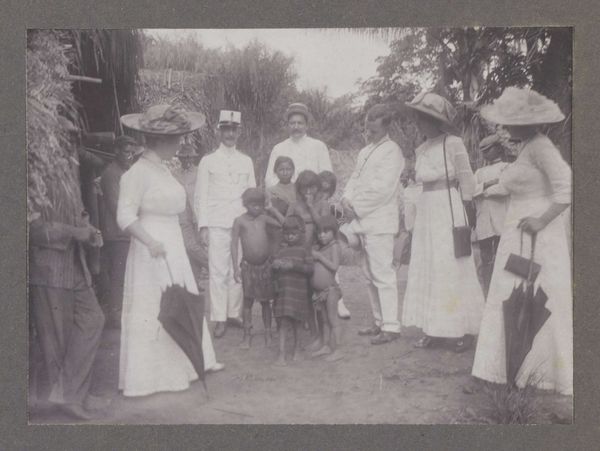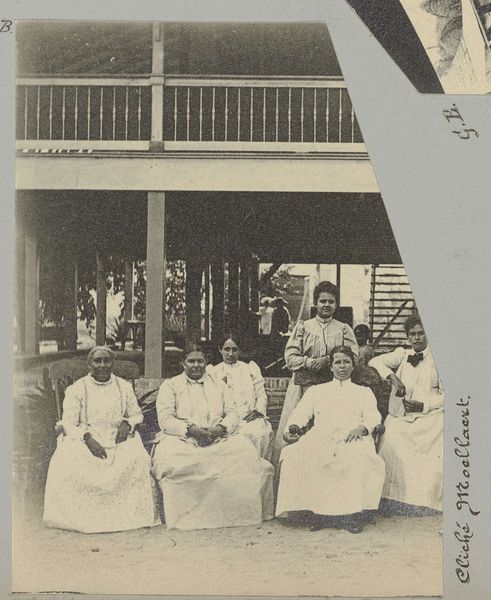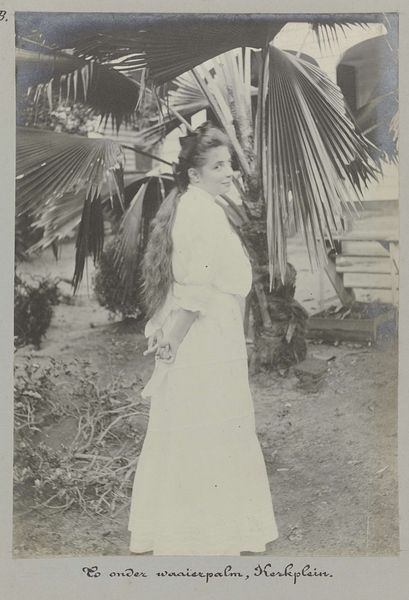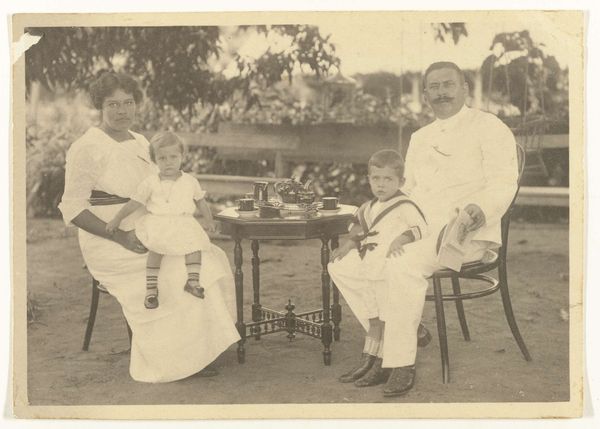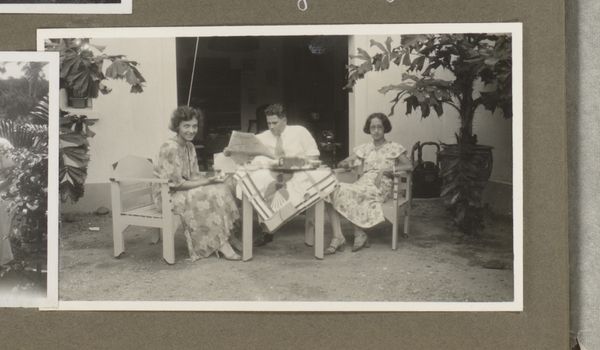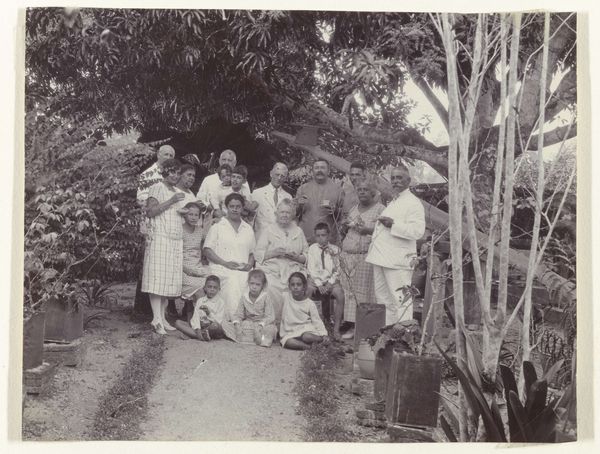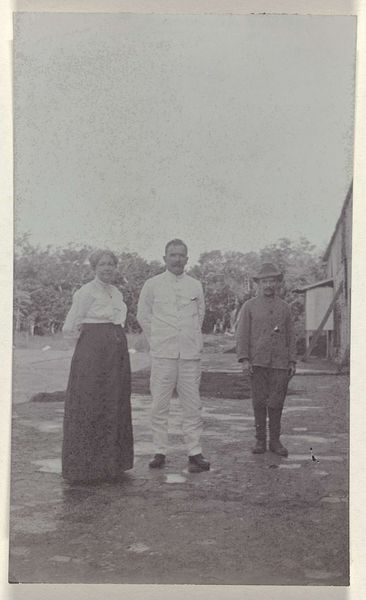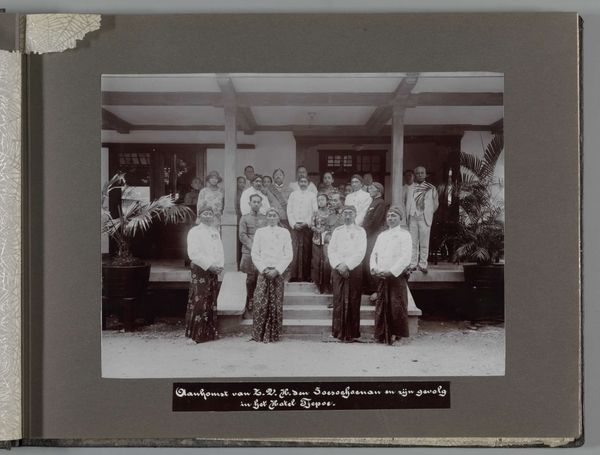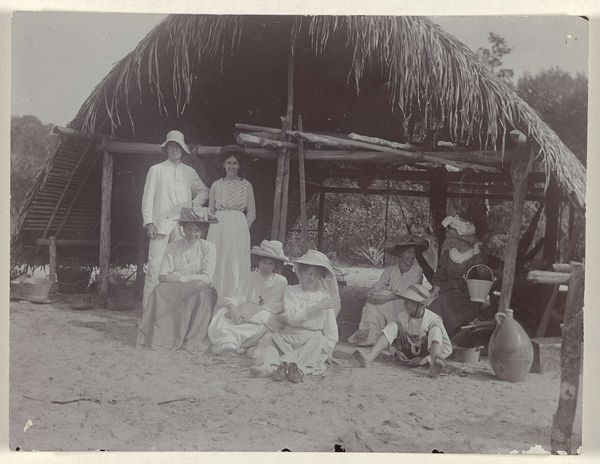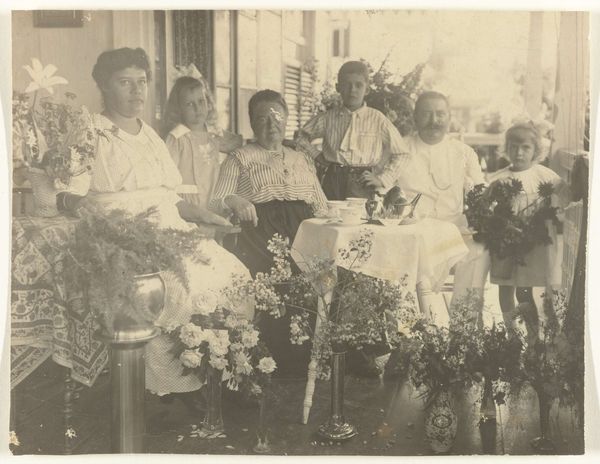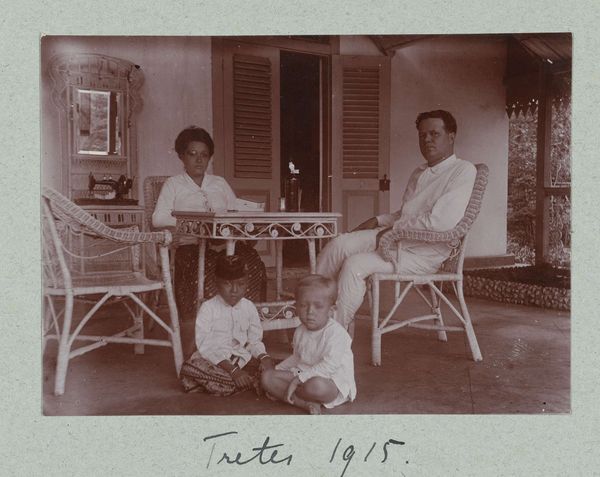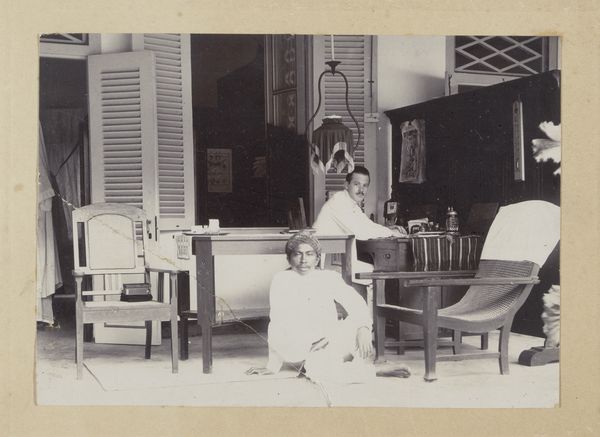
Districts-Commissaris Boekhoudt op Waterloo, met zijn schoonzoon, Mr. Brown, zijne dochter en zijn kleinkind 1891
0:00
0:00
photography, gelatin-silver-print
#
portrait
#
16_19th-century
#
pictorialism
#
archive photography
#
photography
#
group-portraits
#
gelatin-silver-print
#
19th century
#
genre-painting
Dimensions: height 122 mm, width 152 mm
Copyright: Rijks Museum: Open Domain
Curator: Here we have a gelatin silver print dating back to 1891. It's called "Districts-Commissaris Boekhoudt op Waterloo, met zijn schoonzoon, Mr. Brown, zijne dochter en zijn kleinkind". A mouthful, I know, but quite descriptive. It translates roughly to District Commissioner Boekhoudt at Waterloo, with his son-in-law, Mr. Brown, his daughter and his grandchild. Editor: My first impression? Intimate, but staged. Everyone looks so...stiff. Like they're trying really hard to be the picture of familial serenity, but there’s something a little haunting in their formality. Curator: Yes, these early photographs often had that posed, deliberate quality, dictated by the long exposure times. Look at the composition, though. The placement of the figures in relation to the architecture creates interesting visual planes. Editor: I’m struck by the light – it's almost palpable. You can sense the humidity, the heavy air clinging to them. This isn't some crisp studio portrait; it’s raw, textured. You can practically feel the wooden porch beneath your feet, hear the crickets humming! It almost transcends the need for crisp focus; instead there are tones and suggestive shapes to explore with the eyes. It speaks volumes about lived experience, about a time and place so removed from our own. Curator: Pictorialism, yes, with its emphasis on atmosphere and emotion. And note the almost palpable weight of expectation on the daughter’s shoulders as she holds the baby. It isn’t just a family portrait; it's a representation of social roles, of colonial life perhaps. You've noticed her eyes, I presume? Editor: Absolutely. The men are present but slightly detached. But her eyes draw you into a story. I would venture she wasn't so very enthusiastic about motherhood as a young woman tied to the family estates or maybe even a loveless marriage. In her quiet stance and solemn face I read pages. There is always so much we can imagine between ourselves and those staring from inside art, frozen mid step in Time itself. It feels rather voyeuristic at times. Curator: The photograph functions then as more than just a historical record, doesn’t it? It invites interpretation, speculation even. Which is what I love about works like this! Editor: It shows, or, perhaps, reveals—beauty emerging slowly from under an age’s mantle of conventions. A glimpse into another life that reflects many facets of ours in intriguing ways.
Comments
No comments
Be the first to comment and join the conversation on the ultimate creative platform.
